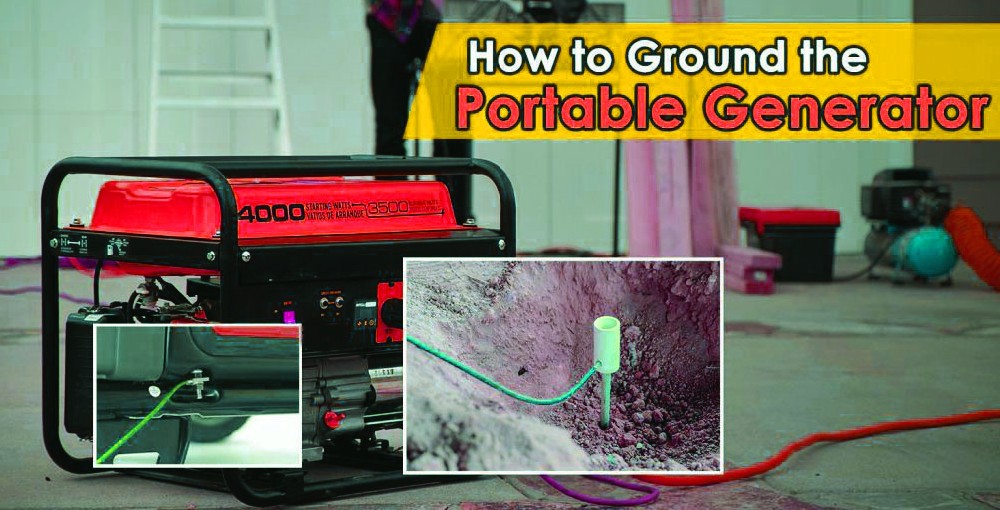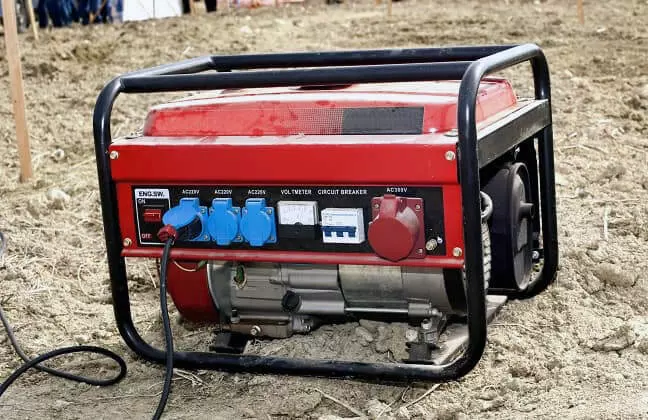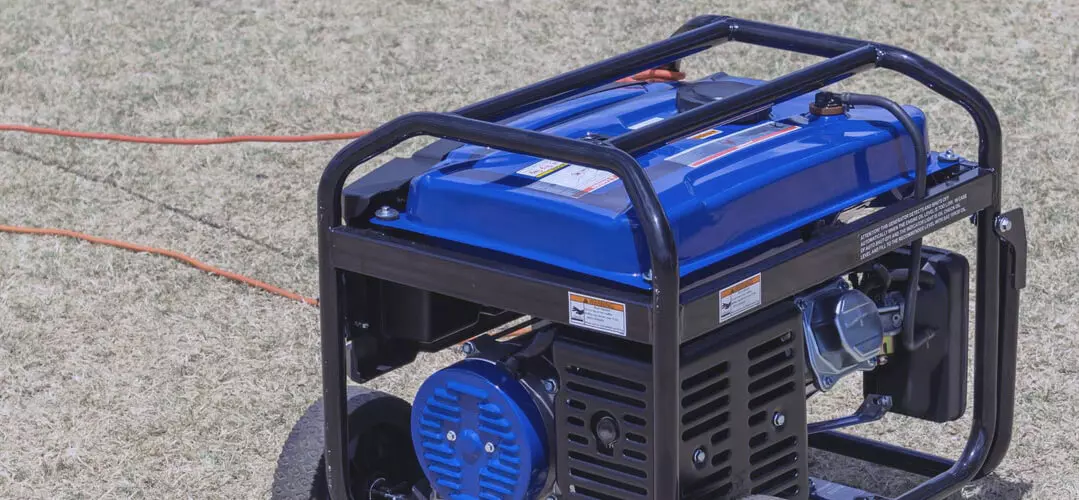23Dec 2022
table of contents

BISON generators give you the freedom to use electricity anytime, anywhere. That means you can power tools for camping, outdoor activities, remote work locations, and more from the comfort of your own home.
Generators can be deadly if misused or improperly installed. It's essential to know how to ground your generator. This safety step is often ignored but is crucial. Next, follow BISON generator manufacturer to learn about it!
Electrical grounding is a safety measure. When an electrical device fails, current jumps from the device to ground. This protects the user from electric shock. Grounding also protects electrical equipment from damage.
There are three methods of grounding the electrical system of a home or business:
directly grounded
Indirect grounding
Isolated ground
direct grounded
Direct grounding is the most common type of grounding. Electrical systems are grounded through metal rods or wires. This pole or wire is buried in the ground. The electrical system is also grounded in the building's water and gas mains.
Indirect grounding
Indirect grounding is used when the building is not close to the ground. The electrical system is grounded through metal pipes buried in the ground. The electrical system is also grounded in the building's water and gas mains.
Isolated ground
Use an isolated ground when the electrical system is not close to ground. The electrical system is grounded through metal plates buried in the ground. The electrical system is also grounded in the building's water and gas mains.
A generator generates electricity by spinning a magnet inside a coil of copper wire. As the magnet spins, it induces a current in the wire. The electricity then flows into your home's electrical system through the generator's output terminals.
If the generator is not properly grounded, the current will flow through the metal frame of the generator instead of through the electrical system. This can damage the generator and cause electric shock. If your generator is not grounded, it could pose a serious safety hazard, fire, or other dangerous situation to you and others who use it.

For safety, all generators need to be grounded. However, whether you need to do anything special to ground the generator depends on how it was designed.
Most generators offered by most China generator manufacturers are designed so that the metal frame around the generator acts as the path of least resistance. In this case, the engine, fuel tank, and alternator housing are all connected to the frame, so any current flowing through the lines outside the alternator will be grounded through the frame.
The easiest way to tell if your generator needs to be grounded is to check your owner's manual. Generator manufacturer should give very clear instructions on whether or not your generator needs to be grounded.
If you don't have a manual or are unclear, the easiest way to tell if your generator needs to be grounded is to measure the voltage between the generator ground lug and the ground rod. The voltage should be 0 volts. If there is voltage, the generator needs to be grounded. This means you need to connect the generator to a separate ground rod. Also look for a sticker or plaque on the side of the generator that says the generator needs to be grounded.
There are three methods for generator grounding. The method you will use depends on the type of generator you imported.
Method 1: Grounding through the frame
It is used with generators that have a metal frame, such as BISON portable generators and RV generators. This type of grounding requires a metal frame.
Generators with a metal frame are usually grounded by connecting the ground wire to one of the generator's bolts or screws. To do this, simply remove the bolt or screw, clean the metal surface with sandpaper, and use the bolt or screw to attach the ground wire to the metal surface.
Method 2: Grounding through the neutral point
It is used with generators without a metal frame. Generators without a metal frame are usually grounded by connecting the ground wire to the neutral terminal of the generator.
To do this, simply remove the neutral terminal from the generator, clean the metal surface with sandpaper, and attach the ground wire to the metal surface using a bolt or screw.
Method 3: Grounding through the engine block
If your alternator does not have a properly grounded frame or negative battery terminal, you can ground the alternator by connecting the ground wire to the alternator's engine block.

Generator grounding tools and equipment
You will need the following equipment on hand to ground BISON generator
GFCI adapter (or power strip with built-in GFCI)
Copper ground wire
Copper ground rod
Hammer or mallet
Wire strippers
Wire connectors
Step 1: Choose a good location to ground the generator.
To select a suitable grounding location for a generator, BISON recommends that the following factors must be considered:
The camping generator must be placed on a dry and firm ground. If the ground is wet or icy, the place must be dry and strong enough to place the generator.
The generator must be placed as close as possible to the power source.
The generator must be placed in a well-ventilated place.
The generator must be placed in a place where it will not be exposed to direct sunlight.
The generator must be placed where it will not be exposed to strong winds.
Choose a location that is at least 10 feet away from your home or other structure. The ground should be flat, dry and free of any vegetation or debris.
Step 2: Place the ground rod on the ground.
Drive the ground rod into the ground with a hammer. Rods should be at least 8 feet long and constructed of copper or galvanized steel.
Alternatively, the following can be used for grounding
Metal underground gas or water pipes;
Metal underground telephone lines;
Metal underground cables;
Metal underground track;
Metal underground pipes;
Metal underground structures or buildings;
Underground metal well casing;
Underground metal fence posts;
Buried ground wires or cables;
Metal structures or buildings;
Metal poles or pipes that have been driven at least 8 feet into the ground.
Step 3: Connect the ground wire to the ground rod.
Use wire strippers to remove about 6 inches of insulation from the end of the ground wire. Wrap the bare wire around the ground rod and use a lug to hold it in place.
Step 4: Connect the other end of the generator ground wire to the generator ground terminal.
Locate the ground bolt on the alternator and loosen the nut slightly. Strip the end of the copper wire an inch or two and wrap it around the ground stud with pliers. When you're done, tighten the nuts to keep the wires firmly in place.
Step 5: Test the Integrity of the Connection.
After the generator is grounded, perform a correctness test. A competent electrician with the right tools can help you with the test. If the connection is good and secure, the ohmic resistance should be 0. Intermittent resistance indicates a loose connection.
The above is the generator grounding method recommended by BISON.
An ungrounded generator is dangerous and can cause:
Electrical overloading of the generator can damage wiring or other sensitive components of the electrical system unless your generator has overload protection like all generators from BISON.
Electric shock from contact with ungrounded metal.
The device overheats, causing a fire.
Explosion caused by stray or excess electrical power in contact with engine fuel or tank.
The easiest way to ground your generator is to check your generator's owner's manual.
If you don't have an owner's manual, there are still a few checks you can do to ensure proper safety.
Systems with separate outlets require the use of ground rods.
If your generator is not a separately derived system, it does not need to be grounded.
To identify a separately derived system, simply check the generator's transfer switch. Unsplit derived systems have a transfer switch that cannot be diverted to a neutral ground conductor, meaning it does not need to be connected to a ground rod.
Most portable generators have the tank, motor, and housing attached to the frame, which means they don't have to be grounded.
Having access to electricity can help you charge your devices and even provide lighting while camping.
The process for grounding a generator while camping is the same as above. Some special safety precautions and setup issues to take when grounding a generator at camp are:
Put the copper wire away from the campsite. Longer copper wire allows you to ground poles away from camp.
If you are camping in an RV, use a heavy-duty four-wire power cord to connect to your generator.
You can connect a neutral metal terminal to the metal frame of the RV or use a ground rod for extra grounding security.
You can ground your generator in a few different ways. One is to use a ground rod, which is a long metal rod inserted into the ground. Another option is to use an underground pipeline, which is a pipe that runs underground to connect the generator to the surface. You can also use a ground plate, which is a metal plate placed on the ground to connect the generator to the earth.
Once you've decided how to ground your petrol or diesel generator, you need to make sure you're using the correct size conductors. The conductor should be able to handle the current generated by the generator. If it's too small, it could overheat and start a fire. You'll also want to make sure the conductors are made of a suitable material. Copper is the best choice as it is a good conductor of electricity and is also resistant to corrosion.
After selecting the appropriate conductor, you need to connect it to the generator. The best way is to use clips. This will ensure that the conductors are securely connected to the generator. Once the wires are properly connected, you'll need to test the connection to make sure it's secure.
Most China generators are designed as a single system, so the frame is used to ground the generator. However, if you find that your generator requires an external ground, proper grounding is an extremely important part of safe generator operation.
Grounding a generator can be quick and easy once you have the right tools on hand. Once grounded, you can operate the generator without fear of possible electrocution during a power outage.
inquiry form here
BISON BLOG, All the latest news and views from Bison Machinery.